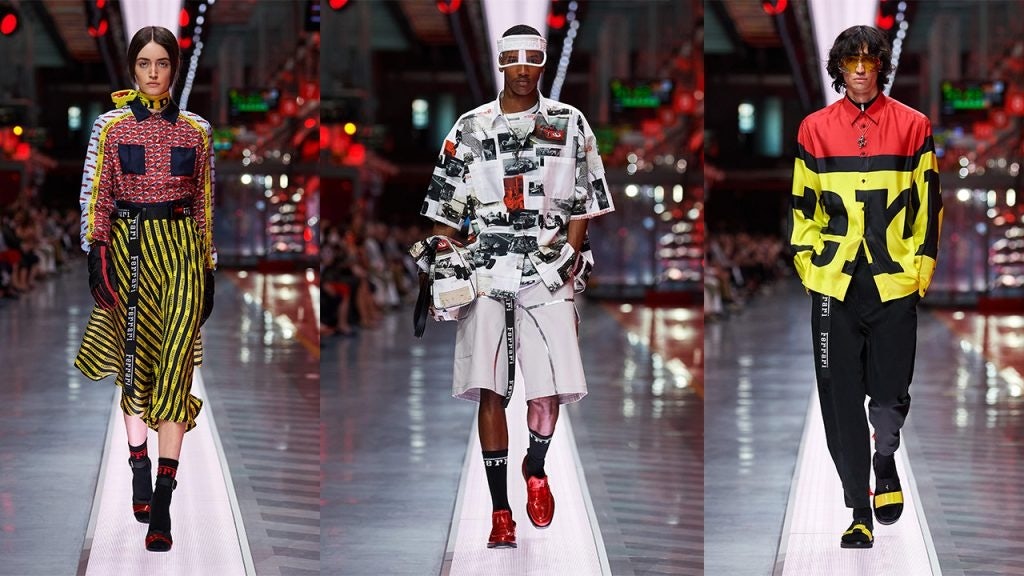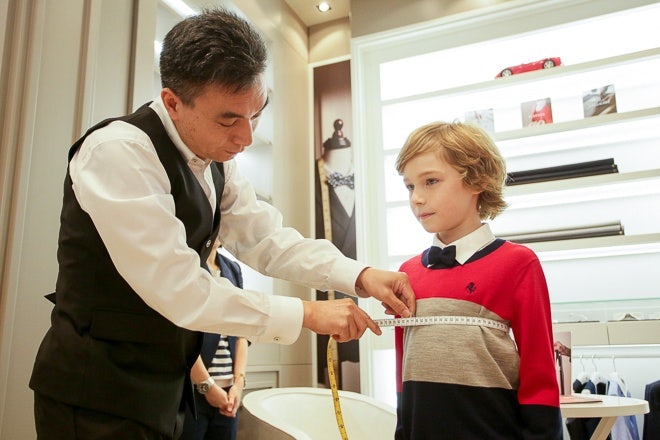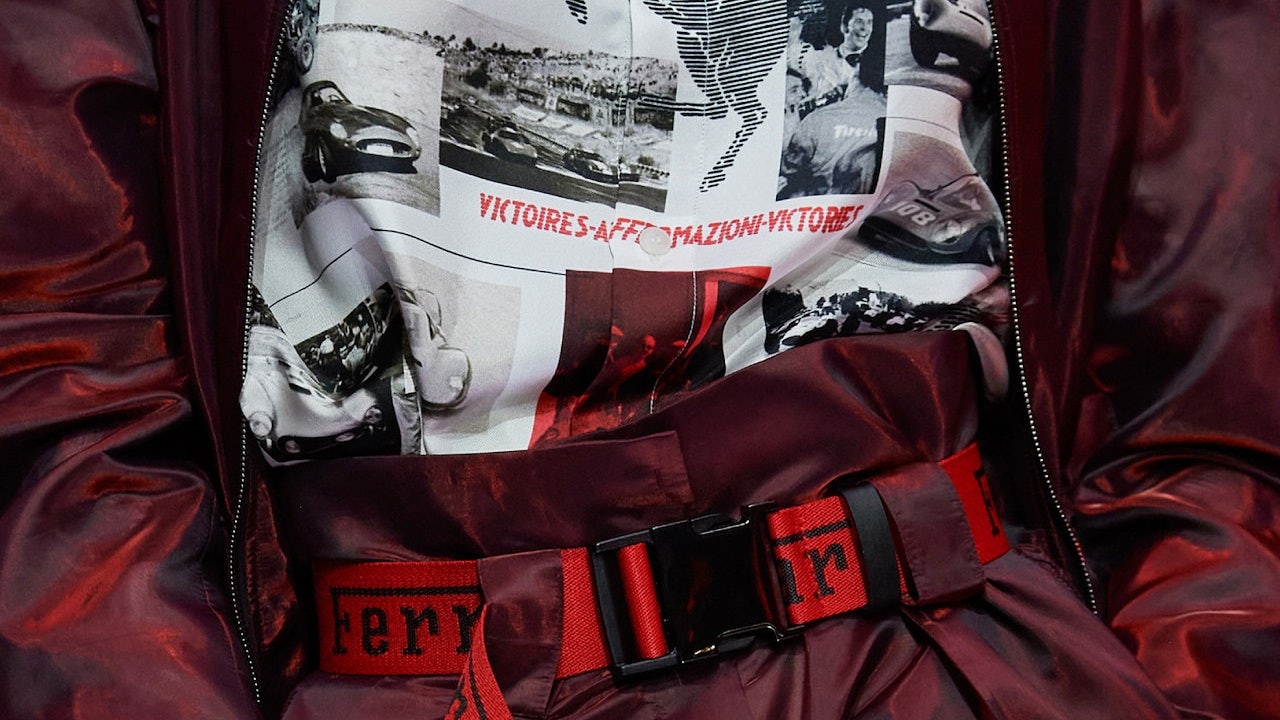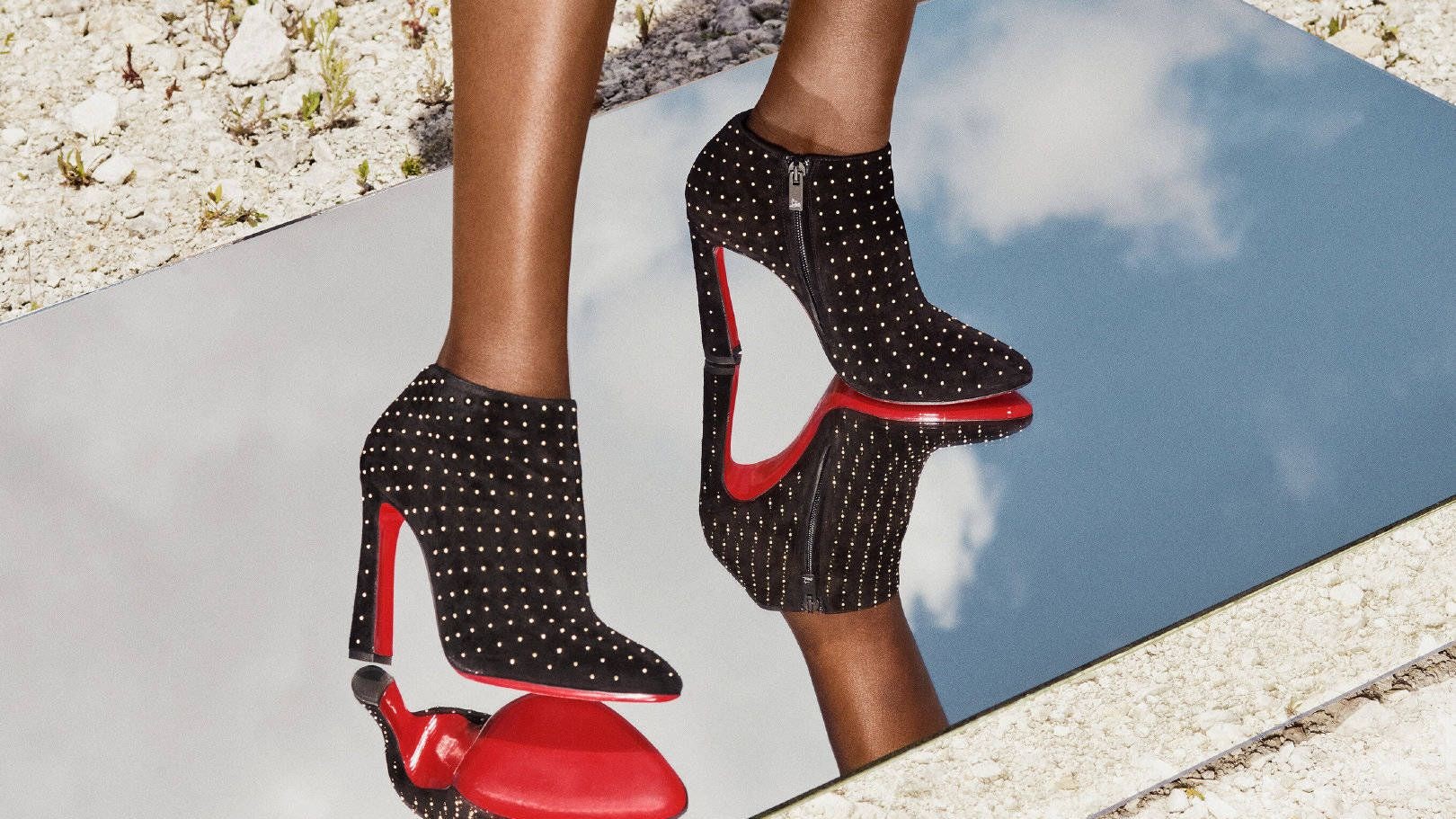Camouflage prints of red, blue, and black. Cargo trousers covered in black crystals. Structured suits in metallic fabrics. Colorful, sleek, and street — these are not the works of Off-White or Versace but none other than Ferrari.
On February 27, the luxury sports car manufacturer staged its first runway show at Milan Fashion Week after dropping a debut collection in June 2021. Designed by Rocco Iannone, who was appointed Brand Diversification Creative Director in 2019, this Fall 2022 capsule marks another milestone for Ferrari’s non-automotive dreams.

Car companies are no strangers to the fashion world. Mercedes-Benz, for example, is involved in more than 60 fashion platforms worldwide and hosts its own Mercedes-Benz Fashion Week, in addition to offering an extensive lifestyle collection. Other automobile makers have turned to luxury and streetwear designers to drum up their business, with notable collaborations including Aimé Leon Dore x Porsche, Lamborghini x Supreme, and Fragment x Maserati.
But Ferrari was already making good money through its licensed merchandise; in fact, the Italian giant generated nearly 1 billion of its total 3.78 billion in annual revenue from products other than cars in 2018. Nicola Boari, Ferrari's Chief Brand Diversification Officer, even admitted to The New York Times that if the carmaker was just concerned with profits, it would stick with licensed goods.
So, why is Ferrari racing into fashion now with in-house designs? And what roadblocks are ahead as it takes its new offerings to China and beyond?
Ferrari revs up its fashion ambitions#
As parent company Exor was expanding its portfolio by purchasing stakes in Shang Xia and Christian Louboutin, Ferrari was gearing up for its own foray into luxury fashion. In November 2019, the name synonymous with Formula One racing tapped Giorgio Armani to create high-end apparel in a bid to move further upmarket. That same year, the Maranello-based brand announced plans to halve its licensing agreements and trim about one-third of its product categories, stating that “some of the products do not fit our brand image and our luxury positioning.”
Ferrari then took design in-house and became more selective about partnerships, maintaining ties with Puma, Ray-Ban, and Richard Mille. According to Humphrey Ho, Managing Partner at Hylink Digital Solutions USA, changing the relationship between licensee and licensor to that of designer and manufacturer “has the effect of increasing profit margins because Ferrari would be granted greater autonomy to set prices that it deems are in line with the value of its designs.”
This helps Ferrari move closer towards its goal of generating 10 percent of its earnings from apparel, luxury, and entertainment over the next decade. Moreover, because car sales are intentionally limited to preserve exclusivity (just 11,155 units were sold in 2021), producing ready-to-wear garments also allows Exor’s star player to reach new clients “in terms of both age and culture,” Boari told Reuters, especially those younger, female, and mostly Chinese.
A bumpy road ahead#
But pivoting to high-end fashion has its challenges. While Ferrari boasts a strong reputation for luxury sports cars, “the situation is completely different in its non-cars segment,” said Antonello Germano, a marketing analyst at Daxue Consulting. “Persuading consumers that ‘Ferrari’ is not just a synonym for high-end cars but also for high-end clothing is probably going to be the toughest challenge the Italian brand will have to face.”
Given this, it makes sense that Iannone was “very literal with symbols and anatomy in order to legitimize [Ferrari’s] design territory,” as he described toThe New York Times. For instance, Ferrari’s first ready-to-wear collection features variations of its name, logo, and coloring, along with rubberized and reflective tape accents, so there’s no mistaking its supercar background. The second capsule takes a more subtle approach but nevertheless draws on recognizable car design cues and technical details to cement Ferrari’s fashion aesthetic.

But will consumers see this as high fashion or just hyped merch? John Elkann, CEO of Exor, seems confident people will make the jump from licensed 40 prancing horse caps to 4,000 trench coats. “There are a lot of people already buying Ferrari-linked products, right?” Elkann said. “So if I give them something better, why wouldn’t they buy it?” Ho echoes this, adding that “many brands hold licenses for luxury and fashion products, and it has not diluted brands.”
Breaking ground in China#
If Ferrari really wants to become a competitive fashion player, it will need to win over the world’s second largest luxury market: China. Although Greater China accounted for 8 percent of the brand’s net revenues in 2021, Ferrari believes it has “the potential for further success in new geographies, in particular in China, but also more generally in Asia, recognizing the increasing personal wealth in these markets.”
Already, the carmaker has dabbled in clothing in the region by launching “Ferrari Store Junior” — an exclusive design for Asia in partnership with Berlinetta Holdings Limited — in 2015 and expanding this kidswear line to cities like Hong Kong, Shanghai, and Beijing. In contrast, its latest Fall 2022 capsule has made little splash in China, garnering only 7,000 views on Weibo as of March 12.

“The Italian carmaker should show stronger commitment to the Chinese market by establishing ties with fashion KOLs to create buzz around its new clothing collection,” Germano advised, noting the lack of Chinese celebrities involved in Ferrari’s Weibo announcement. “Moreover, as Ferrari expands in the lifestyle domain, the brand should open an official account of Xiaohongshu since users of such platforms are especially interested in food, fashion, and beauty.”
Ho points out another issue for Ferrari in China: “positioning itself in a way that prevents the existing perception of Ferrari cars as symbols of conspicuous consumption from carrying over to the clothing line.” With the government’s push for “common prosperity” and crackdown on wealth flaunting, some Chinese consumers may be reluctant to associate themselves with such a flashy luxury icon. Granted, “there will continue to be aspirational luxury buyers, as well as individuals who love the brand and can afford to purchase the vehicle but choose not to due to conspicuous consumption, to whom the Ferrari fashion brand would cater to,” Ho explained.
A future in lifestyle#
Although motorsports could see a boost in China thanks to the rise of local Formula One race driver Zhou Guanyu, Ferrari still has its work cut out for it in the market. That said, its broader strategy is working: in Q4 2021, the brand famous for 300,000 cars saw double digit growth across all metrics and crossed the €4 billion threshold for the first time, partly attributed to brand diversification. In addition to fashion, Ferrari has also reopened its restaurant, Ristorante Cavallino, in Maranello, to solidify its entry into the lifestyle category.
Of course, Ferrari has a long way to go before it can run laps around luxury magnates like Louis Vuitton and Chanel. But as one of Europe’s strongest brands, Ferrari’s reputation for design, performance, and exclusivity now gives it a head start in the high fashion race.


